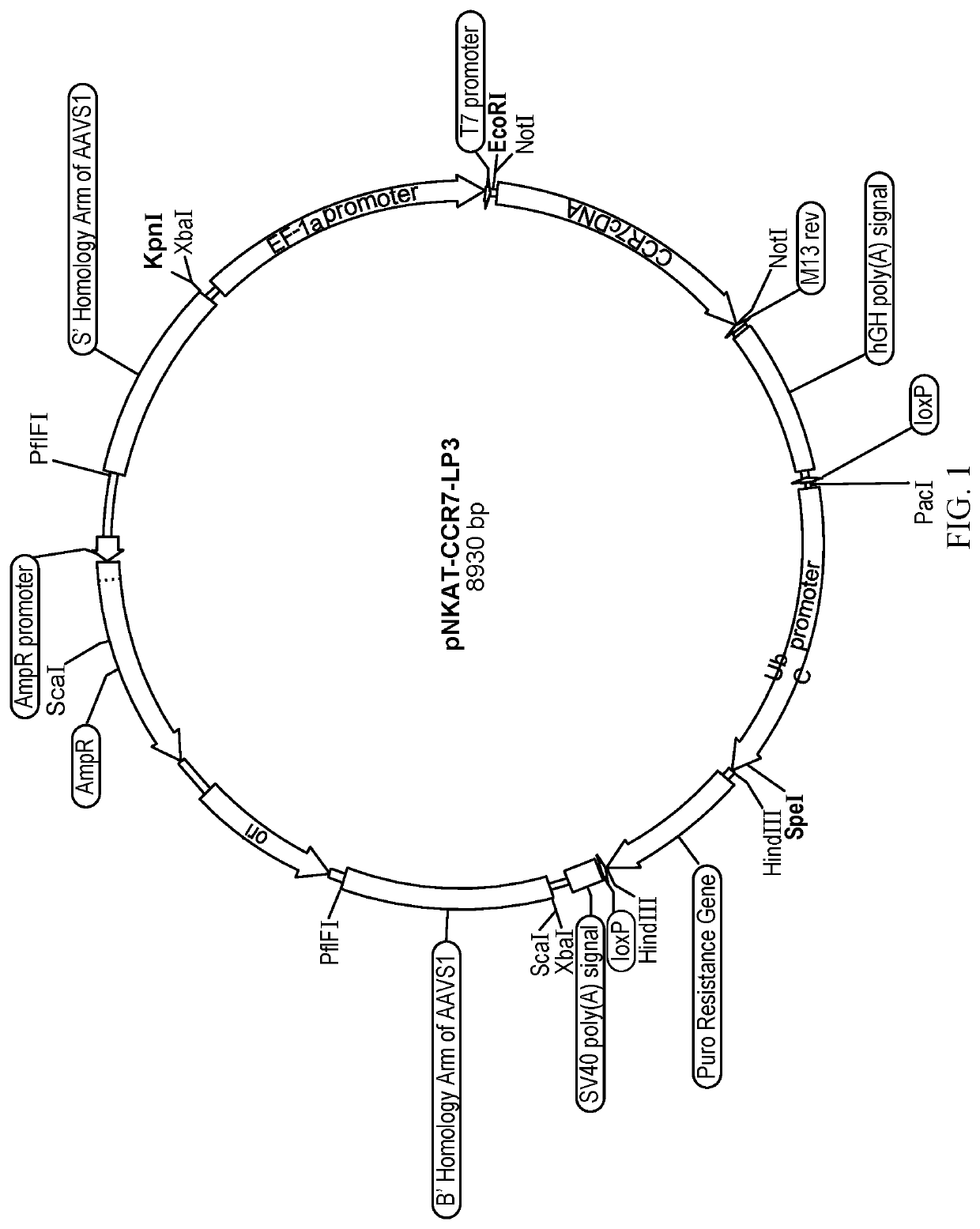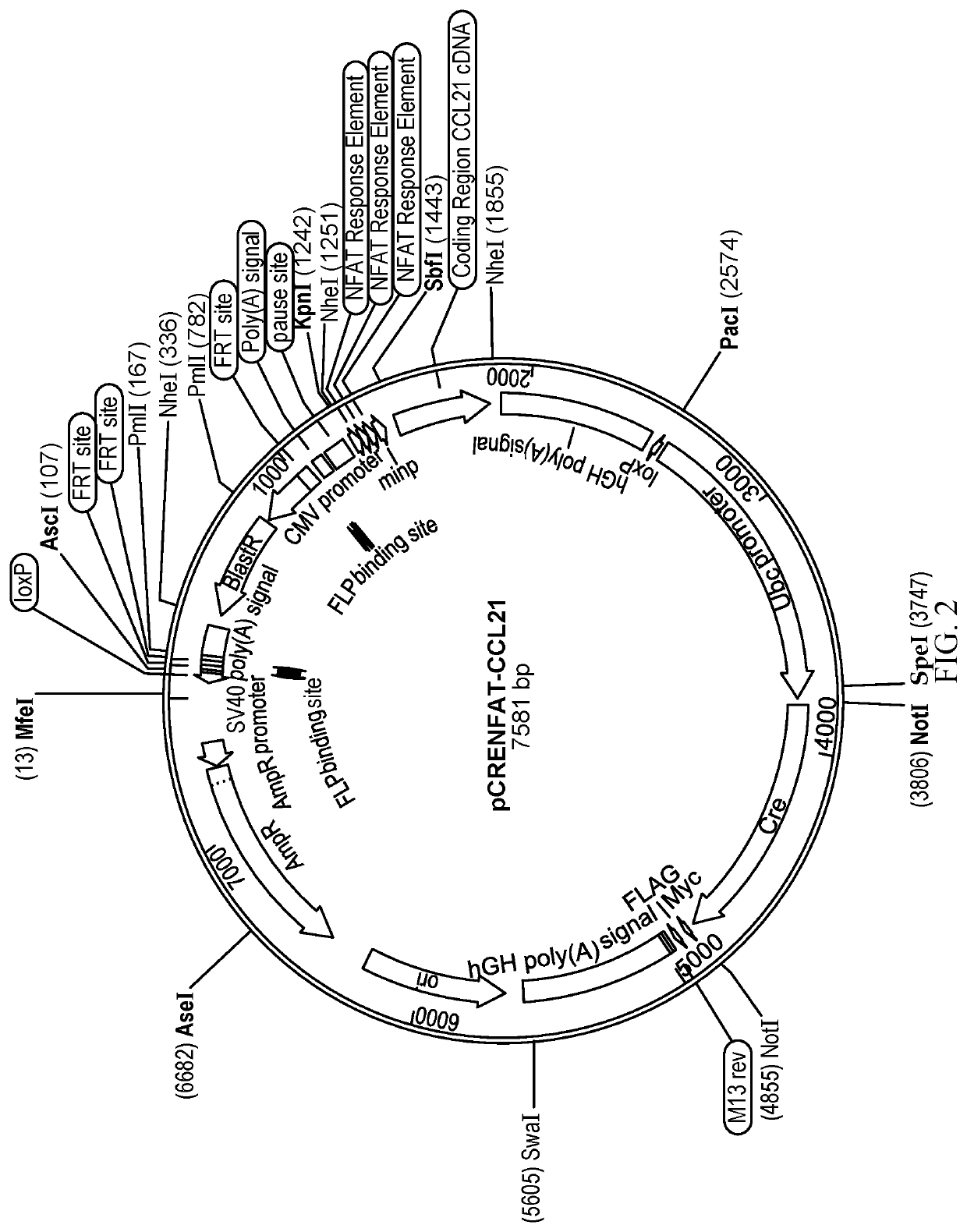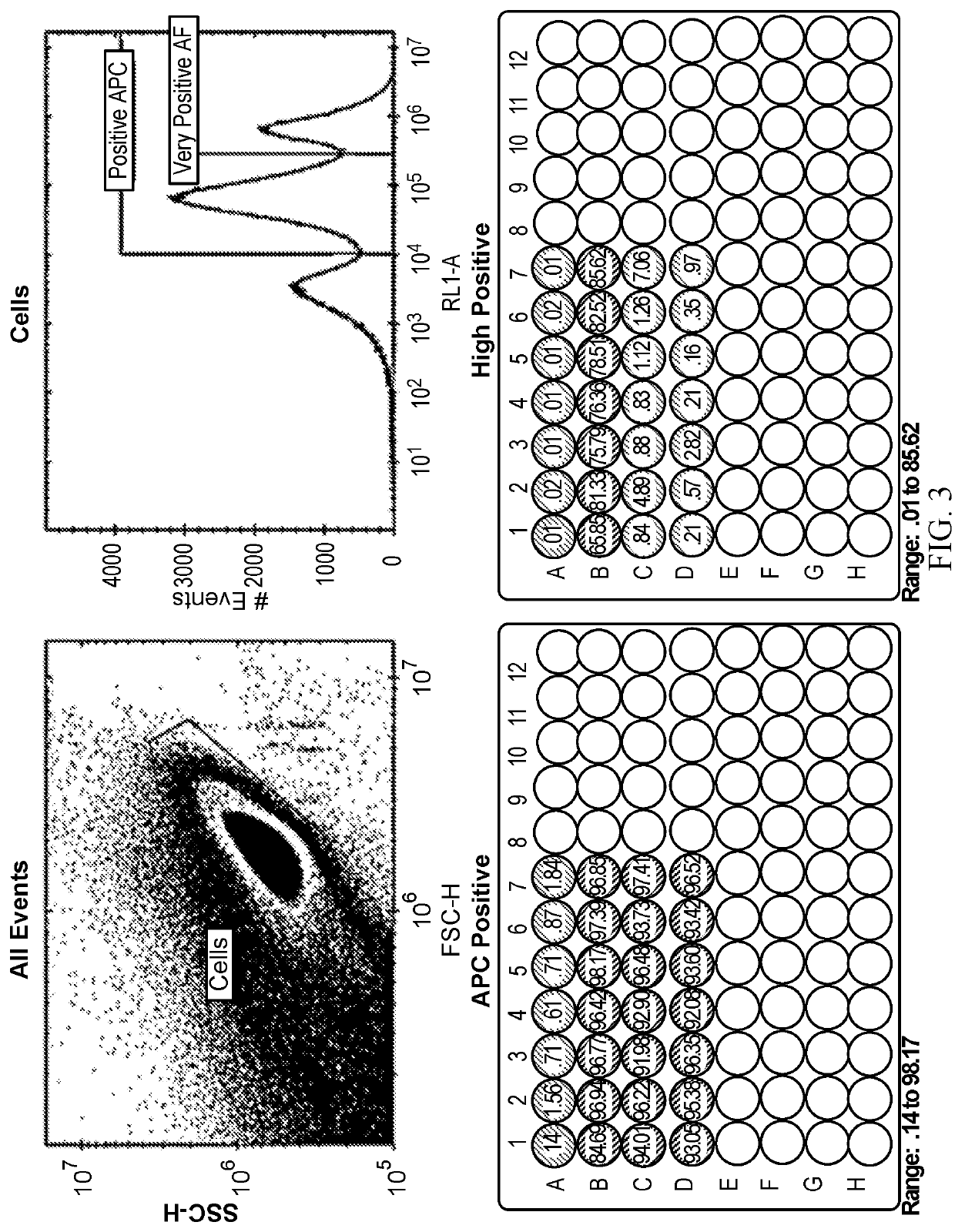Chemokine responsive activated natural killer cells with secondary homing activation for verified targets
a technology of activated natural killer cells and secondary homing activation, which is applied in the direction of antibody medical ingredients, drug compositions, peptides, etc., can solve the problem that the treatment of tumors remains a challeng
- Summary
- Abstract
- Description
- Claims
- Application Information
AI Technical Summary
Benefits of technology
Problems solved by technology
Method used
Image
Examples
example 1
NK Cell Line Expressing CCR7
[0068]Modified NK-92 cells were made by linearizing the pNKAT-CCR7-LP3 plasmid (FIG. 1) with the PflFI enzyme followed by gel purification of the linearized plasmid and then electroporating the linearized plasmid using a NEON transfection system (Thermo Fisher Scientific, Waltham, Mass.) on NK-92 cells. After 1 week of puromycin selection, the resulting polyclonal population was tested for CCR7 expression, and monoclonal cell lines were derived by serial dilution in X-Vivo™ media (Lonza, Basel, Switzerland) supplemented with 5% human serum and IL-2. Improved selection was observed with the addition of 25% conditioned media (sterile filtered supernatant from the polyclonal population). The modified NK-92 cells contained the EF1a promoter, CCR7 Gene with Poly-Atail, and the LoxP flanked puromycin resistance gene driven by the ubiquitin promoter all encased in homology arms targeting the AAVS1 locus (SEQ ID NO:7). The sequences used in the examples and discu...
example 2
n of NFAT Responsive Construct for Controlled Expression of CCL21
[0075]To identify an NFAT responsive element, a cell line stably expressing an NFAT-based Luciferase expression cassette (NR2.2) was created by electroporating a linearized construct into Nk-92 cells which contains a stop region, followed by 3 NFAT response elements (SEQ ID NO:4), and a minimal promoter (SEQ ID NO:5), which in the presence of activated NFAT will thus drive the production of Firefly Luciferase. A subset of these cells were then also electroporated with mRNA containing an anti-CD19 CAR (an antigen present on Sup-B15 cells, otherwise resistant to killing by NK-92 cells). These cells are represented in the left graph as ENR2.2. The cells were then plated in triplicate in the absence or presence of target cells, and incubated for periods ranging from 2.5 hours to 24 hours. At the end of the incubation period, the Step 1 reagent from a Promega DualGlo system was added to the wells to activate luciferase (by ...
example 3
NK Cell Line Expressing CCR7 and CCL21
[0076]The pCRENFAT-CCL21 plasmid is incorporated into the NK-92 cells containing CCR7 using the LoxP sites embedded in the pNKAT-CCR7-LP3 construct in a recombinase mediated cassette exchange. Following electroporation of the circular plasmid (pCRENFAT-CCL21), Cre Recombinase is transiently expressed mediating the exchange of the new LoxP-flanked cassette for the old selection cassette. Selection in Blasticidin is used to favor the incorporation of the new cassette, and monoclonal cell lines are sub-cloned from the resulting population in the same manner as previously described in Example 1 to obtain modified NK-92 cells expressing CCR7 and CCL21.
[0077]To evaluate Modified NK-92 cells expressing CCR7 and CCL21, unstained modified NK-92 cells are co-cultured in the lower well of a Boyden chamber with cells known to cause NFAT activation (K562 or other cell line) and stained modified NK-92 cells are placed in the upper chamber. If migration is dem...
PUM
| Property | Measurement | Unit |
|---|---|---|
| total volume | aaaaa | aaaaa |
| total volume | aaaaa | aaaaa |
| nucleic acid | aaaaa | aaaaa |
Abstract
Description
Claims
Application Information
 Login to View More
Login to View More - Generate Ideas
- Intellectual Property
- Life Sciences
- Materials
- Tech Scout
- Unparalleled Data Quality
- Higher Quality Content
- 60% Fewer Hallucinations
Browse by: Latest US Patents, China's latest patents, Technical Efficacy Thesaurus, Application Domain, Technology Topic, Popular Technical Reports.
© 2025 PatSnap. All rights reserved.Legal|Privacy policy|Modern Slavery Act Transparency Statement|Sitemap|About US| Contact US: help@patsnap.com



